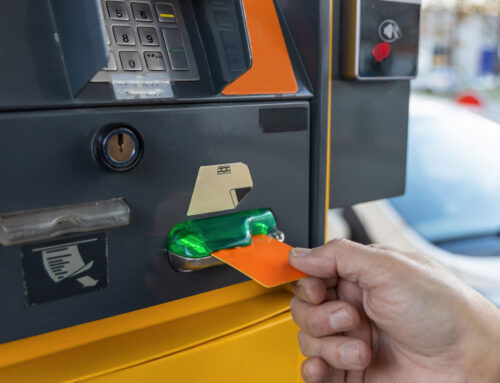A trucker pulls up to your stop. He swipes his credit card or OTR fleet card. Your truck stop’s bank pulls the money from the driver’s account and deposits it into your business account. In between pulling the money and depositing it, your business gets charged a small fee, a percentage of the transaction.
That charge is known as an interchange fee, or an interchange credit card processing fee.
There’s More to This Fee Than You Might Think
Spoiler: the funds don’t just go from the driver’s account to your business account.
First, it goes through what’s called a payment gateway, which encrypts the data from the driver’s account and helps to keeps it secure.
Once that step is complete, the data goes through a payment processor. Here’s where the processor essentially makes sure the driver’s account has enough funds to complete the transaction.
Approved Or Denied
If, for some reason, the driver’s account has insufficient funds, then the payment will be denied. That prevents the transaction from going any further. If the driver’s account has sufficient funds, the payment processor sends the funds to your truck stop’s business account.
You Might Not Like It, But Interchange Fees Help Your Business
To ensure this absolutely critical, multi-step process happens without a hitch, you as a business owner pay a percentage of each sale to the credit card issuer. Though many business owners lament the loss of money with each sale, it does help to procure funds, prevent credit card fraud, and most importantly, retain customers.
The Four Kinds of Interchange Fees
Interchange fees aren’t created equal. They are associated with different pricing models.
Some of these pricing model feature wholesale fees. In other words, they have fixed rates that are non-negotiable. Others feature markup rates, which are negotiable. Markup rates charge a different percentage that ranges from payment processor to payment processor.
Currently, there are four major types of payment processing pricing models associated with interchange fees. Here is some basic information about each and how they could affect your business.
Interchange-Plus
Arguably the best option for a truck stop, interchange-plus creates a thorough, monthly itemized list of wholesale (non-negotiable) fees and markup (per transaction, fluctuating) fees.
With an interchange-plus payment processing pricing model, you can stay on top of how much you are paying for each transaction and how much your interchange fees are taking from them.
Subscription
The newest kind of payment processing pricing model is subscription-based. You pay a fixed percentage for each transaction. An additional markup rate is rolled into a monthly membership fee.
Tiered
The tiered payment processing model is the most complicated and, potentially, the most expensive. It categorizes transactions as qualified, mid-qualified, or non-qualified. Although the qualified rate is the lowest, a large majority of transactions fall into the mid or non-qualified rates.
These tiers tend to mask the actual interchange fees and merchants tend to pay more than if they chose another pricing model.
Flat-Rate
You pay a fixed percentage for each transaction. It’s not uncommon for the flat-rate to be comparatively high, but it’s the best bet for businesses that don’t see a ton of volume.
Follow Financial Fuel Services to Learn More
Interested in learning more about interchange fees and payment processing pricing models? Follow Financial Fuel Services’ Industry News page. We can help to keep you informed of news, technology updates, and events in the trucking industry.






